Part 1 looked at the basics of passive cooling. Part 2 explores the specifics of passive cooling in more detail.
Q: What is a most common physical arrangement used for passive cooling?
Most designs use a combination of conduction and convection cooling, and perhaps some radiation. Conduction is used to draw the heat away from the localized source such as an IC or resistor, while convection is used to then convey that heat, which has been moved away from the source (which is likely heat-sensitive), to another area.
Q: How are the conduction and convection mechanisms actually implemented?
A variety and series combination of mechanisms are used. For heat sources such as ICs, the heat is drawn away from its immediate source (the IC die) via the die-to-package interface, the IC package, and the package leads.
Once removed from the die and at the IC surface, it is removed via devices such as:
- heat sinks, usually a one-piece, multi-finned aluminum structure, designed for maximum airflow and transfer of heat from the fins to the moving air, Figure 1. Natural convection – heat-driven airflow—passes by the heat sink or other heat-dispersion component, and this moving air carries the heat away, thus cooling the source;
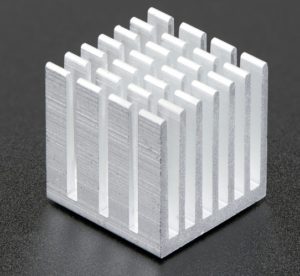
- heat pipes, which efficiently and passively convey heat from one end of a sealed pipe to the other via an internal working fluid, Figure 2;
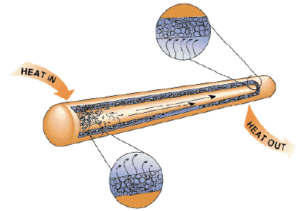
- the copper traces and especially layers of the PC board used to convey the heat away from the sources mounted on the board.
Q: Can convection be used in orbiting spacecraft such as the International Space Station, where there is ambient air?
Not really. Although there is air and so it would seem that convection is possible, there is no opportunity for associated air flow. The reason is that convection assumes that hot air rises away for the source, to be replaced by cooler air from below. In the weightless environment of an orbiting capsule, there is no “above” or “below” so the heated air simply lingers around and surrounds the source. It actually becomes a hot blanket around it!
Q: When is passive cooling a risky strategy?
Even in cases where it makes sense analytically, it may not work. For example, the ventilation slots on the chassis may be blocked by items (lunch or other or equipment) placed on top. Or the unit may be oriented on its side, so the convection airflow path is now longer from bottom to top, which is the necessary direction for the natural passive convection.
Q: How is passive airflow analyzed and modeled?
Even though “heat” and heat energy are real but nebulous concepts, the amount of heat flow and is easily assessed by one well-known and easily measured physical parameter: temperature. By looking at temperature gradients between the hot side and cold side, thermal impedances at each interface, and amount of airflow, the cooling results due to passive airflow can be assessed to a fairly good first estimate.
Thermal models and numbers are available for how much heat can be carried by freely moving air, the various thermal impedances associated with the physical arrangement, the heat developed by the source, and the area to which the heat will be drawn.
Q: What is involved in modeling the passive cooling situation?
This modeling is usually a two-stage process: first, modeling the heat source, such as an IC die, and the heat flow from the IC to its immediate surroundings through the die mounting, IC package, and package leads, Figure 3 and Figure 4. For power supplies, the modeling begins with modeling the temperature of the surfaces of the power supply, driven by the internal heat sources (MOSFETs, resistors, and others).
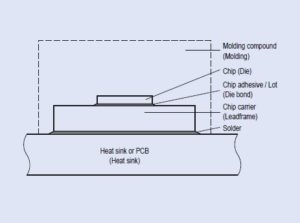
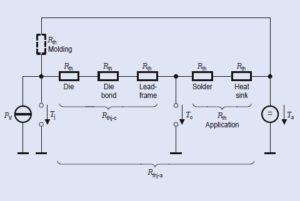
The next step is to model how the heat which has reached the exterior or the IC or the power supply is removed via additional conduction paths (PC board, heat sink, heat pipe) and any available convection. Together, the analysis based on these models tells the designer if the passive cooling paths are sufficient to keep the source and system below allowable thresholds.
References
Infineon Technologies, “Thermal Resistance Theory and Practice”
Infineon Technologies, “Thermal Modeling of Power-electronic Systems”
Renesas Electronics Corp,, “Heat-dissipation mechanism”
Chemical Engineering Resources, “What is a Heat Pipe?”

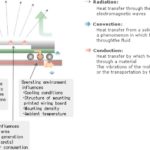

[…] Part 2 will look at specific passive-cooling issues in more detail. […]